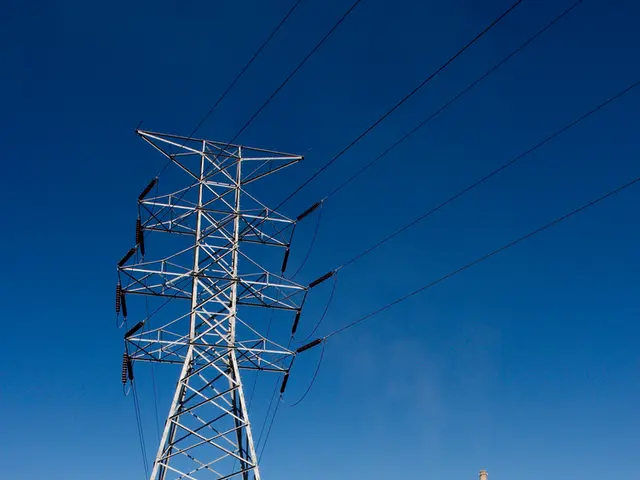Impact of Media Aggression on Behavior: Examining its Role in Directing Actions
In this digital epoch, we're immersed in a sea of media, from television and movies to video games and social platforms. While media serves as a source of entertainment and knowledge, concerns abound regarding the impact of media violence on our behavior and society. In this post, we'll explore the intricate connections between media, violence, and ourselves.
What's Media Violence?
Media violence is the depiction of aggressive actions in various forms of media such as TV shows, movies, video games, and web content. It encompasses everything from physical aggression like fights, shootings, and explosions to psychological violence such as bullying and threats. Often exaggerated for attention or to keep audiences engaged, media violence is prevalent across multiple platforms.
Shapes of Media Violence
Media violence manifests in diverse ways across various media types:
Television and Movies
Television shows and films frequently present violence in intricate ways, whether through intense fight scenes, crime dramas, or realistic war portrayals. At times, these depictions are intensified to make narratives more engaging or to gather more viewers.
Video Games
Numerous popular video games feature players engaged in virtual conflicts, shootings, and other aggressive activities. They range from realistic simulations to fantasy realms where violence plays a significant role in gameplay and storytelling. The impact of these games on players' perceptions of violence is a topic of continuous debate.
News Reports
Media outlets routinely cover real-life violent events like wars, terrorist attacks, and crimes. While they inform the public, these reports can also influence how people perceive violence in society. They play a crucial role in shaping perspectives but can contribute to fear or desensitization toward violence.
Social Media
Platforms such as YouTube, TikTok, and Instagram are also venues for sharing violent content. This can involve user-generated videos displaying fights or violent acts, as well as news stories about violent occurrences. Rapid content dissemination on social media can drive public discussions and perceptions about violence.
Theorizing Media Violence
Several theories help explain the impact of media violence on individuals and society:
Social Learning Theory
Albert Bandura's Social Learning Theory posits that individuals, particularly children, learn behaviors by observing others, including what they see in the media. When individuals view violence in movies, TV shows, or video games, they might reenact those behaviors in their real lives. This shows how media can shape behavior via observation and imitation.
Desensitization Theory
Regular exposure to media violence can lead to gradual desensitization, where individuals adopt less sensitive views on violence and accept aggressive behaviors more readily. This theory highlights how constant exposure to violent content can transform how people respond to violence in their daily lives.
Cognitive Script Theory
According to the Cognitive Script Theory, people develop mental scripts for behavior based on their experiences and the media they consume. Media violence can create scripts in our minds that suggest aggressive responses to conflicts or stressors. These scripts can influence how individuals perceive and tackle similar situations in their real lives, potentially inciting aggressive behavior as a learned response.
Priming Theory
The Priming Theory suggests that exposure to media violence can activate aggression-related thoughts and feelings in individuals, making them more likely to respond aggressively to real-life situations. This theory demonstrates how media exposure can influence immediate responses to events based on recent experiences with violent content.
Media Violence's Effects on Us
Aggressive Behavior
Research, including the meta-analysis by Anderson and Bushman in 2002, has consistently linked media violence to increased aggression, especially in children and adolescents. Repetitive exposure to aggressive acts in media can shape how individuals behave in their real lives.
Fear and Anxiety
Exposure to violent media can heighten feelings of fear and anxiety in individuals. Witnessing graphic depictions of violence or scenes of intense danger can make people feel vulnerable about their safety and the safety of their loved ones. This increased fear can affect their risk perceptions and contribute to a general sense of insecurity.
Desensitization
Persistent exposure to violent content can dull individuals' emotional responses to both media and real-world violence, a process known as desensitization. Desensitization can lead to reduced emotional reactions, making individuals more accepting of violence as an ordinary aspect of life.
Imitation
Children, who are particularly impressionable, are more susceptible to imitating aggressive behaviors shown on screen, which can impact their attitudes and actions regarding conflict resolution.
Media Violence's Impact on Society
Increased Crime Rates
Some research suggests a link between violent media and higher crime rates. Centerwall's study in 1989, for instance, found that the introduction of violent TV programs in the mid-20th century corresponded with an increase in violent crimes in subsequent years. This correlation raises questions about how media portrayals of aggression might affect real-world conduct and societal trends.
Cultural Norms
Media violence can shape cultural norms, making aggressive behavior seem more acceptable. When violence is consistently presented as a solution to problems in media, it can affect how people perceive and address conflicts in their daily lives. This normalization of aggression in the media can influence societal attitudes towards violence and its consequences.
Public Health Concerns
Media violence's psychological effects are a significant public health concern. Prolonged exposure to violent content has been associated with increased aggression, desensitization to violence, and heightened fear and anxiety. These effects can lead to various social and behavioral problems, impacting individuals' well-being and community cohesion.
Who's Most Affected?
Children and Adolescents
Young people are particularly susceptible to the influence of media violence, due to their developmental stage and impressionability. Children may struggle to discern reality from fiction, rendering them more likely to imitate behaviors they observe in media. This can impact their attitudes towards violence, shaping their social interactions and conflict resolution strategies.
Individuals with Preexisting Aggressive Tendencies
People who already exhibit aggressive behavior are more susceptible to the influence of violent media. Media portrayals can reinforce and intensify existing aggressive tendencies, potentially leading to more frequent and intense acts of aggression in real life.
Frequent Consumers of Violent Media
Individuals who consume violent media extensively are more likely to experience its effects, whether in terms of attitudes or behaviors. Continuous exposure to violent content can desensitize individuals, making them less sensitive to the consequences and more accepting of aggressive behavior as a societal norm.
Steps Forward
Parental Guidance
Parents have a crucial role in guiding their children's media consumption. By monitoring their children's entertainment choices and discussing the distinction between fiction and reality, parents can help children develop critical thinking skills and understand the impact of media on their attitudes and actions.
Media Literacy Education
Integrating media literacy education into school curricula can help young people develop the tools to critically evaluate media content, fostering a better understanding of how media can shape perceptions and conduct.
Industry Regulations
Stricter media regulations, such as setting guidelines for content and age ratings, can help mitigate the negative impact of media violence, particularly on vulnerable audiences like children and adolescents.
Encouraging Positive Content
Supporting creators who produce media promoting empathy, tolerance, and non-violent solutions encourages a healthier media landscape by offering alternatives to violent content.
In conclusion, the lasting impact of media violence on both individual behavior and societal norms is backed by substantial research. Recognizing who is most affected enables us to take steps to minimize its influence. Through parental guidance, media literacy education, industry regulations, and the promotion of positive content, we can shape a more positive, violence-free media landscape for all.
- To reduce the impact of media violence on children, parents should monitor their children's media consumption and foster critical thinking skills by discussing the difference between fiction and reality.
- Encouraging media literacy education in schools can help young people develop the ability to critically analyze media content, fostering a better understanding of how media depictions influence their attitudes and actions.
- Stricter regulations on media content, such as setting guidelines for content and age ratings, can help protect vulnerable audiences like children and adolescents from the harmful effects of excessive media violence. Additionally, supporting creators who produce positive, non-violent content can contribute to a healthier, more empathetic media landscape.








